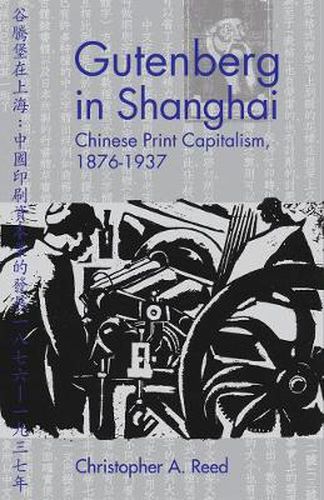Readings Newsletter
Become a Readings Member to make your shopping experience even easier.
Sign in or sign up for free!
You’re not far away from qualifying for FREE standard shipping within Australia
You’ve qualified for FREE standard shipping within Australia
The cart is loading…






In the mid-1910s, what historians call the Golden Age of Chinese Capitalism began, accompanied by a technological transformation that included the drastic expansion of China’s Gutenberg revolution. Gutenberg in Shanghai examines this porocess. It finds the origins of that revolution in the country’s printing industries of the late imperial period and analyzes their subsequent development in the Republican era. This book, which relies on documents previously unavailable to both Western and Chinese researchers, demonstrates how Western technology and evolving traditional values resulted in the birth of a unique form of print capitalism whose influence on Chinese culture was far-reaching and irreversible. Its conclusion contests scholarly arguments that view China’s technological development as slowed by culture, or that interpret Chinese modernity as mere cultural continuity. A vital reevaluation of Chinese modernity, Gutenberg in Shanghai will be enthusiastically received by scholars of Chinese history and by specialists in cultural studies, political science, sociology, the history of the book, and the anthropology of science and technology.
$9.00 standard shipping within Australia
FREE standard shipping within Australia for orders over $100.00
Express & International shipping calculated at checkout
In the mid-1910s, what historians call the Golden Age of Chinese Capitalism began, accompanied by a technological transformation that included the drastic expansion of China’s Gutenberg revolution. Gutenberg in Shanghai examines this porocess. It finds the origins of that revolution in the country’s printing industries of the late imperial period and analyzes their subsequent development in the Republican era. This book, which relies on documents previously unavailable to both Western and Chinese researchers, demonstrates how Western technology and evolving traditional values resulted in the birth of a unique form of print capitalism whose influence on Chinese culture was far-reaching and irreversible. Its conclusion contests scholarly arguments that view China’s technological development as slowed by culture, or that interpret Chinese modernity as mere cultural continuity. A vital reevaluation of Chinese modernity, Gutenberg in Shanghai will be enthusiastically received by scholars of Chinese history and by specialists in cultural studies, political science, sociology, the history of the book, and the anthropology of science and technology.